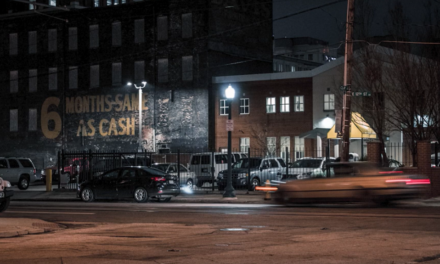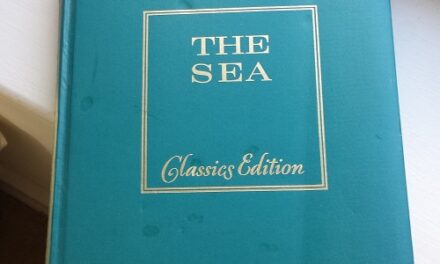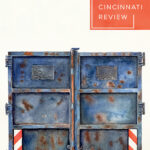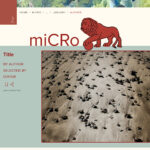 Any day now, we’re going to receive a number of large, ridiculously heavy boxes full of Issue 8.2. As we wait, we’re doing core-strengthening exercises and reminding ourselves to lift with our legs. Managing editor Nicola Mason leads us in calisthenics to start each day, periodically shouting: “Knees higher! Come on, people, an ampersand has better form than you!” We’re also checking every entry in the subscriber database and periodically sandpapering our fingerpads to encourage calluses. Fun Fact: the manila-envelope papercut rates a 10 on our papercut scale (whereas 60 lb. white offset comes in a weak 6) and surprisingly produces a larger quantity of the red stuff than the occasional, accidental letter-opener incident.
Any day now, we’re going to receive a number of large, ridiculously heavy boxes full of Issue 8.2. As we wait, we’re doing core-strengthening exercises and reminding ourselves to lift with our legs. Managing editor Nicola Mason leads us in calisthenics to start each day, periodically shouting: “Knees higher! Come on, people, an ampersand has better form than you!” We’re also checking every entry in the subscriber database and periodically sandpapering our fingerpads to encourage calluses. Fun Fact: the manila-envelope papercut rates a 10 on our papercut scale (whereas 60 lb. white offset comes in a weak 6) and surprisingly produces a larger quantity of the red stuff than the occasional, accidental letter-opener incident.
Before we shed blood to bring you great lit, though, we want to look back wistfully at a strong issue, 8.1. For one last time, we take a closer look at what some contributors had to say about their pieces in that issue. In fact, we’ve waxed enthusiastic on all three of these pieces in our “Why We Like It” feature!
Steve Amick: Initially, I was asked by the writers Keith Taylor and Laura Kasischke to write a contemporary Michigan “ghost story” for an anthology they were editing for Wayne State University Press—Ghost Writers: Us Haunting Them. But I was more interested in doing something that could also be explained as just a psychological glitch. Harry Bennett was very much real and lived (before I was born) in a “castle” about a mile from the house where I grew up. Yet I had no idea, till I did much more research than I probably needed (I even spoke to an elderly woman who babysat for his kids), that he was born in Ann Arbor and had what one might consider fairly “enlightened” influences in his early years. The layers made him infinitely more interesting to me, and I am now working on expanding “Not Even Lions and Tigers” into a short novel. As a villain, his union busting is of course incredibly timely today. Michigan’s new infamously anti-union governor even lives in a high-security mansion in the very same small township as Bennett’s Castle.
CR volunteer Brian Trapp’s take on “Not Even Lions and Tigers”
Julie Funderburk: These two poems, “Landscape of the Young” and “Landscape of the Careful,” belong to a series of landscape poems. I was happy to discover this structure, because it enabled me to embed narratives, widen the poems’ sense of relevance, and speak authoritatively through imagery, which is perhaps what I seek to ultimately do when I write poetry. I found the titles could give the poems immediate purpose. The structure even became an opportunity to breathe new life into some temporarily abandoned drafts that did not function well as more straightforward narratives. Once I had the right abstraction in the title, the hard part was done, and I found much pleasure in crafting the images.
Associate Editor Matt McBride’s take on “Landscape of the Young”
Laura Eve Engel: I have a terrible memory, but I recently discovered that if you ask me about where I was when I wrote what draft of which poem, I can tell you exactly. The first line of “Reciprocity” arrived in its entirety as I was falling asleep, so I got out of bed and typed it. I do this a lot, but I get distracted or choose sleep instead, and the lines end up lost in a graveyard of untitled documents. Maybe it’s the way this particular line began with “and” that made me want to follow it somewhere; all I know is this time I stayed up until I’d done something I liked with it. I think I’d just read Chelsea Minnis’s Poemland, which has, if I remember rightly, many sweet drinks. It’s likely I’d been realizing again, too late, that I was disappointed in something.
CR volunteers Joe Dargue and Ruth Williams’s takes on Reciprocity









